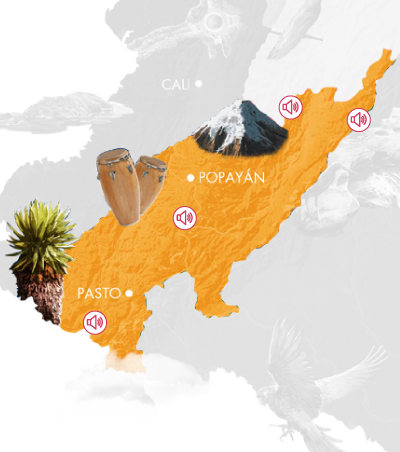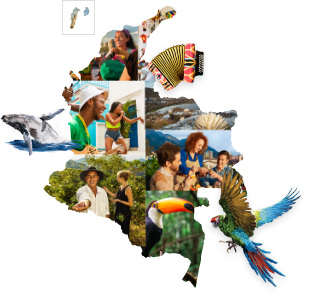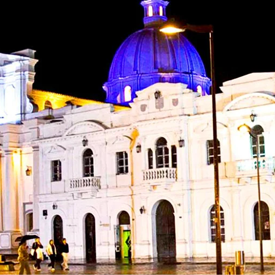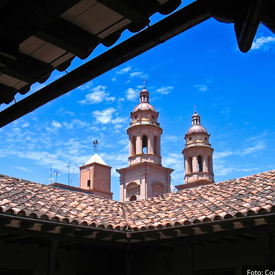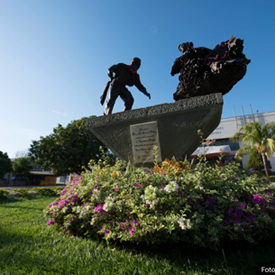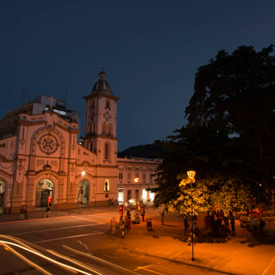Cauca, the land that has preserved its cultural and natural value from generation to generation.

Credit: Alexandre Laprice // Shutterstock
The department of Cauca is known as the water star thanks to its coastal strip of mangrove, rainforest and estuaries that flow into the Pacific Ocean. It is also a religious and spiritual territory in which there are contrasts of traditions derived from indigenous culture.
Most of the department of Cauca is part of the Colombian Massif. Ancestral land of ancient culture thanks to the indigenous people who inhabited theterritory. It is also the region that transports its visitors to an imperishable world and to connect with the mountains, moors and volcanoes.
Geography
Cauca has five geographical areas,making this one of the most biodiverse departments in the country, has plains in the Pacific area, mountainous areas of the Western and Central Cordillera, the valleys of Patía and salients such as the Bota Caucana.
The department is bordered to the south by Nariño and Putumayo; to the east by Huila; to the north with Valle del Cauca and Tolima and to the west with the Pacific Ocean.
Popayán Cauca, to white city of Colombia
Campaign- Feel the rhythm
Popayan is known as an important religious tourism destination, as the most representative events of the city take place during Holy Week. It was designated as a UNESCO City in 2005, as a Masterpiece of the Oral and Intangible Heritage of Humanity in 2009.
It celebrates the Religious Music Festival, which features great representatives of Christian music, was created in order to complement the religious processions in 1964.
Also in this city you can see architecture of the seventeenth, seventeenth and nineteenth centuries such as the Morro del Tulcán, Cerro de las Tres Cruces, Puente del Humilladero, Torre del Reloj, Panteón de los Próceres. Likewise, museums such as Casa Museo Mosquera and Guillermo León Valencia and the National Museum.
Culture and Indigenous Traditions
There is an important community of Guambian and Misak natives located in the municipality of Silvia. Here tourists can learn about their traditions, beliefs, lifestyle, cuisine and crafts.
Also, in the municipalities of Jambaló, Inza, Peéz and Toribío, there are indigenous communities known as paeces. This village is more reserved and is not well known to the public, but it should be noted that they are responsible for caring for the environment. nte.
Destinos to know in Cauca
Photo Caption: Purace national Natural Park in Cauca-Colombia
Purace National Natural Park
Featuring 83,000 hectares and is located between the departments of Cauca and Huila, this park is considered a natural beauty since there are so many rivers. You can also see the Volcanic Mountain Range of the Coconucos that has 11 volcanic craters.
Gorgona Island National Natural Park
With over 61,000 hectares, this is a paradise of rainforest and humid forest. The park has two islands: Gorgona and Gorgonilla,ideal sites for ecotourism, among the activities is to visit freshwater lagoons and dive to admire coral species.
Ness national gastronomic congress
An event of great recognition is the National Gastronomic Congress of Popayán, in which recognized chefs attend and create dishes where typical preparations of the region such as corn, crustaceans, fish, banana and coconut are promoted.
From the above, traditional dishes such as wrapped soup, chicken sancocho, peanut pepper, shrimp sweat, seafood rice, encocados and a wide list of gastronomic pleasuresare derived.
Featured: Do not miss the wealth of the department of Nariño, download the complete magazine here.
Fairs and Parties of Cauca
Kings
This day is celebrated in January to the sound of music, comparsas, events full of tradition, popular festivals, bullfights and an unparalleled gastronomic sample.
Easter
For the territory, Holy Week is a celebration of great importance and its events have acquired great recognition both nationally and internationally. This space is so important that families come together to carry out congregations and processions, a custom that takes generations.
Tha hands of the Caucano: Joya Artesanal
In Cauca, indigenous and peasant artisans carry out handicrafts that play an important role in the economy of many families and also promote their culture and traditions. Among its handicrafts are the timbío baskets, wood carvings, ñapangas, backpacks woven with indigenous iconography and misak hats.
Finally, the department of Cauca is a place full of unique landscapes, impressive snow-capped mountains. It is also the land of ecotourism and religious tourism. Without a doubt it will be a place that will be kept in the memory of everyone who visits it and will long to return.


